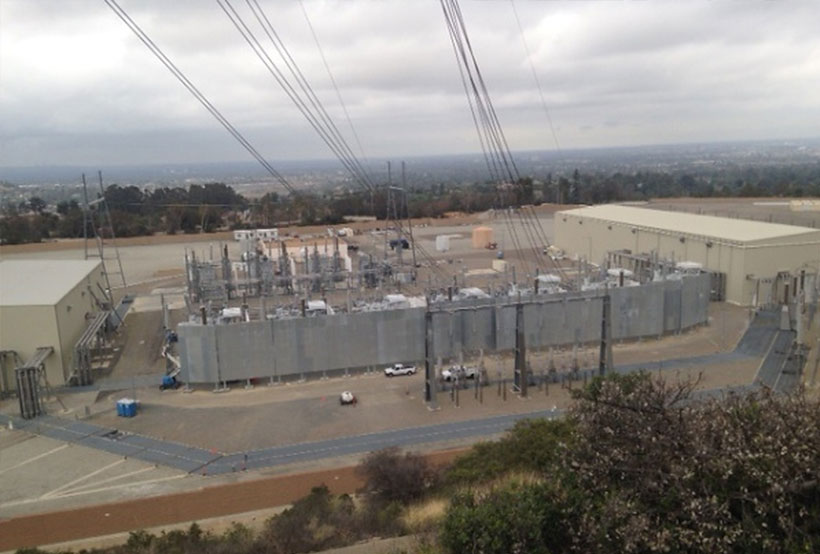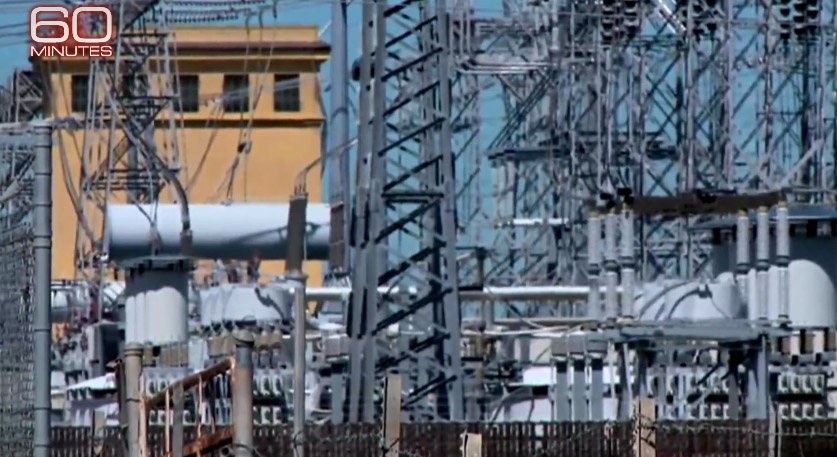In spring 2022, we see in Ukraine that the Russians have targeted Ukrainian power supplies as one of their primary targets. The loss of power impacts heat, water, lighting, telephones, and the Internet and can significantly affect the economy of a country and the very survival of its inhabitants.
This has prompted the US government to consider critical infrastructure protection and the implications of attacks on the power grid for the safety of this country.
We have already seen that Russia has a proven ability to mount significant cyberattacks on American infrastructure. Investigations into the power grid have demonstrated the extent of the vulnerability that currently exists.
One recent example of these attacks happened just yesterday, December 5th 2022 in Moore County North Carolina where domestic terrorists broke into two substations and shot at transformers causing blackouts throughout the entire county. Power has not been expected to be restored until Thursday.

Another example of what can happen took place 9 years ago in South San Jose. On the night of April 16, 2013, gunmen spent 20 minutes firing at transformers at the PG&E Corp.’s Metcalf transmission substation. It was clear from their targeting that it was designed to knock out the substation. The attackers had not just casually fired on the substation but had visited earlier, disconnected communications from the substation and marked optimum firing points with piles of rocks.
It seemed to investigators that there were no real electrical grid protection and security systems that could stop this kind of attack, and the attackers managed to stop 17 of the 21 large transformers from working. Fortunately, a neighbor heard the fire and called the police, but the attackers managed to escape.
The result was that the substation was taken out of service for weeks. However, since it was just one substation, the power company was able to reroute power from other substations. If this had not been possible, it could have knocked out power to the whole of Silicon Valley, hitting major companies like Google.
It was uncertain whether the attack was carried out by individual terrorists or a nation-state, but whoever it was had skilled people working for them.
There are three major power grids in the US. The Easter, Western, and Texas grids. Each of these grids has many substations, with large transformers. Individual substations going down have systems that allow automatic re-routing to other substations, but should several go down simultaneously, then it could be serious. Such as the cascade of substations that went down in 2003 with the Great Northeast Blackout, which left 45 million Americans without a power supply.
A study was carried out that provided grounds for major concerns when they discovered how a few substations taken out of action could result in taking out the electricity supply for the whole country. Unbelievably, less than 20 substations going down would be enough for this total blackout of the USA.
After the Metcalf attack, there were moves to put walls and other defences around these substations. This has not been completed and many substations still have no protection.
Around the world, there have been several attacks on power grids by terrorists, and the government has looked into this threat. These attacks have utilized planes, bombs, and drones.
Physical attacks, however, are not the only threat. In 2005, Russia carried out a major cyber attack on Ukraine that knocked out around 60 substations, leaving 230,000 Ukrainians without power.
The shocking thing is that there is no one organization responsible for electrical grid protection in the USA. The situation is made worse by the fact that the grid is not owned by one company. It is a network of 3,000 individual state-owned and private companies.
It is accepted that physical threats, cyber-attacks, and even bad weather could cause massive blackouts across the USA. Research has shown that 38% of power outages in the USA are due to physical attacks on the grid.In the last decade, there have been over 700 physical attacks on the grid, of which several have been copycats of the Metcalf attack in San Jose. These attacks have come from a variety of sources, including eco-terrorists, white supremacist groups, and others.
The US government has begun to approach power companies across the USA to discuss how Russia and other countries have the ability to carry out cyber attacks. They are also sharing information on techniques used and software available to the Russians. There is no one size fits all solution to this potential disruption of supply.
Protecting the Power Grid
Attacks on the power grid have the potential to have a cascading effect, resulting in local, regional, and even national power outages that could last for dangerously long periods of time, according to some experts. Transformer protection is seen as a priority to protect US infrastructure.
From both a security and a regulatory standpoint, it is becoming increasingly necessary to put in place adequate physical security to deter or respond quickly to such attacks.
One company has been producing practical solutions to this threat. Throughout its more than three decades in business, DuraBarrier USA LLC has provided innovation, design, and expertise in the use of fire barriers and upgraded fire barriers to contain and safeguard all forms of infrastructure and vital equipment, as well as people, buildings, and other objects.
Fire, ballistic, and explosive systems from DuraBarrierUSA have been installed in hundreds of locations across the United States, all of which are entirely tailored and modular. Their tried-and-true designs are shovel-ready and simple to install, allowing companies to meet regulatory standards while saving time and money at the same time. Two key products to help protect US infrastructure are:
Ballistic Barriers
Ballistic Transformer Barriers, These systems, which are installed around the country to guard soft targets, are vital in protecting substations and critical infrastructure. An installation up to 60 feet tall can resist high powered rifles, explosions, fires, earthquakes, and winds up to 150 mph. Steel and panel assembly provide modular capabilities that may be combined with ballistic and fire panels to build transformer and critical equipment protection barriers. Strategic placement around transformers prevent line of sight with rifles and other firearms so that would be attackers cannot target them in the first place.

Transformer Fire Barriers
Transformer Fire Barriers are designed to protect other transformers from flames and explosions while inflicting little environmental harm. Hundreds of substations around the US have these shovel-ready barriers installed. Their Transformer Fire Barriers defend and secure smaller electrical system elements. They are seismically compliant and may be modified for a number of purposes. In addition, their barriers are suitable for transformers located near waterways, where hazardous runoff from sprinkler systems or chemicals may affect bodies of water like rivers and lakes. When transformers fail, their fire barriers prevent collateral damage.




